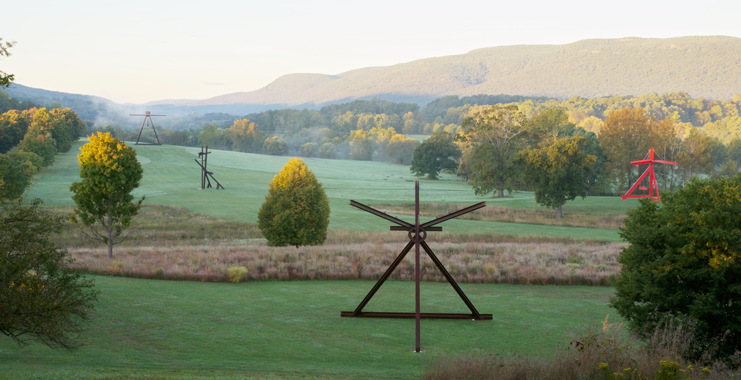May 14 2016 - Nov 13 2016
New Windsor, NY
The works in the exhibition Dennis Oppenheim: Terrestrial Studio, selected from different points in a forty-five-year career, illustrate a tension between the natural world and the built environment. Born in Electric City, Washington, Dennis Oppenheim (1938–2011) moved to New York City from the Bay Area of California in 1967 and became a leader in Land art, creating earthworks: large scale works that used the earth as material in locations across the country. He described particular sites as his “terrestrial studio.” As he explained, “All of sudden, what constituted a conventional art object was threatened—it was now dematerialized. Sculpture could be a hole in the ground, for instance—un-moveable and in some cases un-seeable. Of importance was the fact that the artist was now outside of the studio, in real time activating works within an ongoing system.”
In working outdoors Oppenheim expanded the confines of the gallery space and the commercial gallery system. While maintaining a commitment to formal ideas of sculpture and art, his artistic concerns were also aligned with ecological, anthropological, social, and political issues. Oppenheim’s interest in working on a large scale and outside the gallery system led him to public art and permanent works for municipalities worldwide, which he concentrated on from the mid-nineties onward. Outdoors, this exhibition includes early, large-scale works that engage the public and the natural landscape, such as Dead Furrow (1967), as well as later public works that reference formal landscapes and gardens, such as Entrance to a Garden and Alternative Landscape Components (2006). Here the artist creates a vocabulary of natural elements using fabricated, industrial materials, in contrast to earlier earthworks. A fiercely creative artist, Oppenheim produced work that cannot be encompassed within the boundaries of any single movement, style or form. Indoors, examples of his use of photography, video and film, sound, sculpture, architecture, and design demonstrate the myriad ways that Oppenheim worked fluidly between indoor space and the natural world.
Credit: Exhibition overview from museum website
Exhibition Venues & Dates
May 14 2016 - Nov 13 2016
New Windsor, NY
